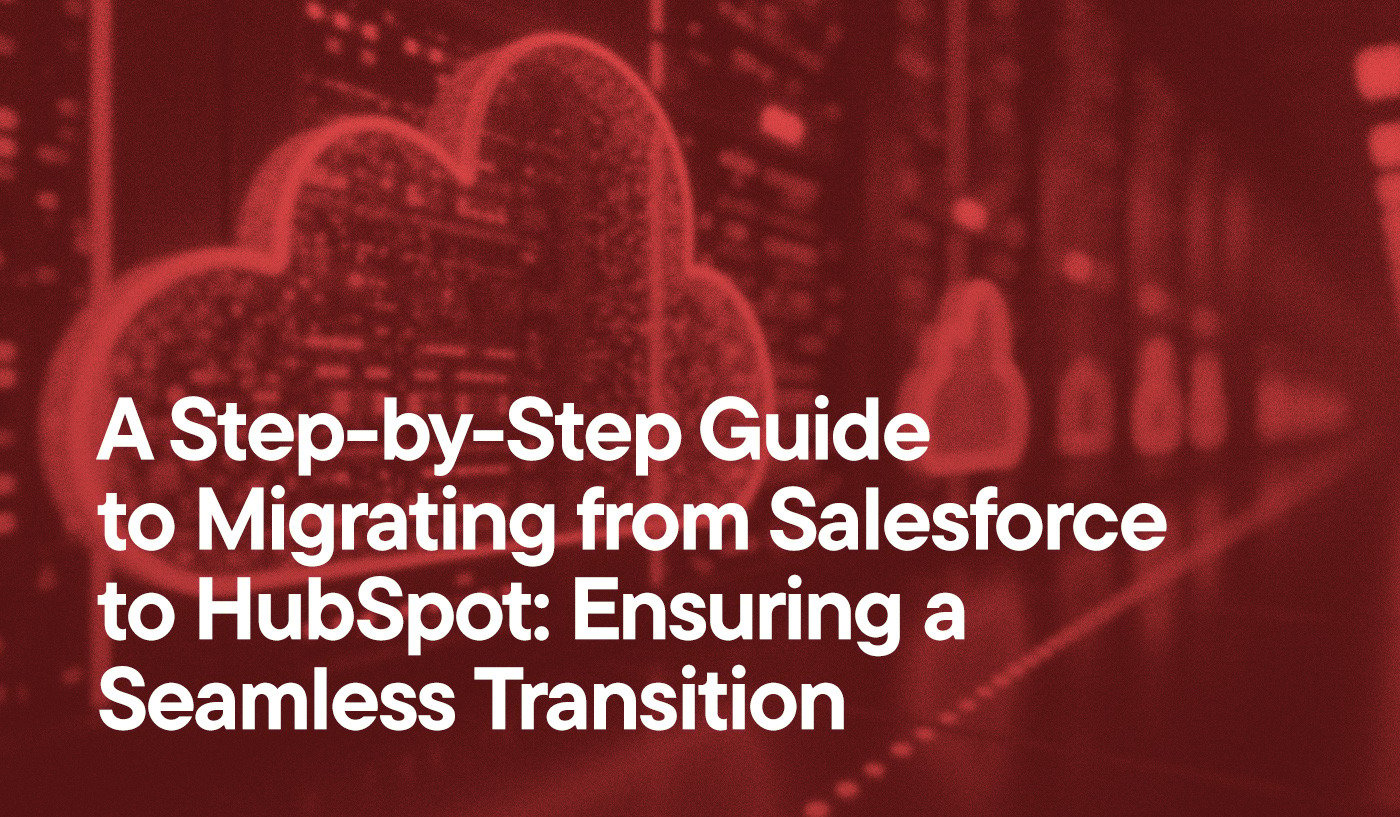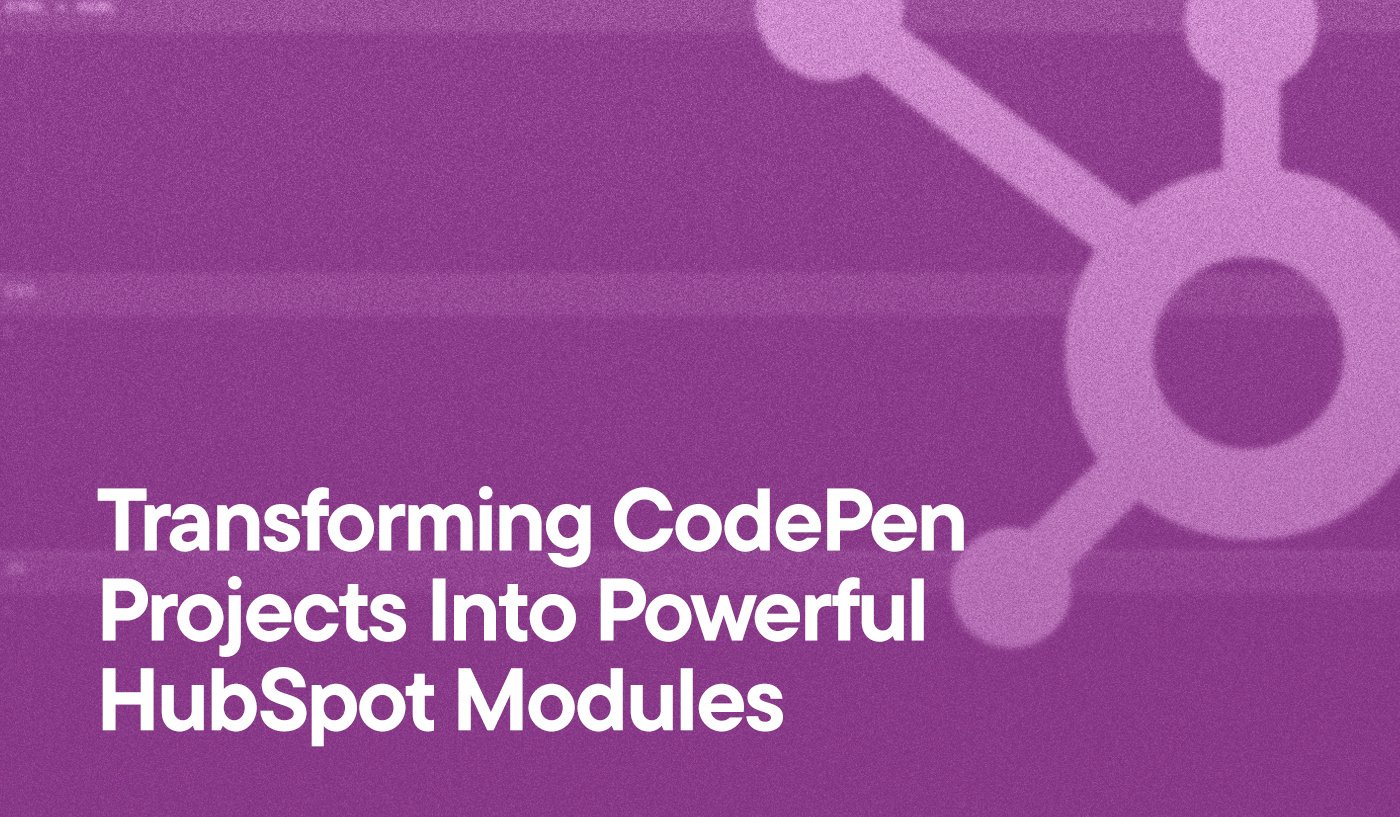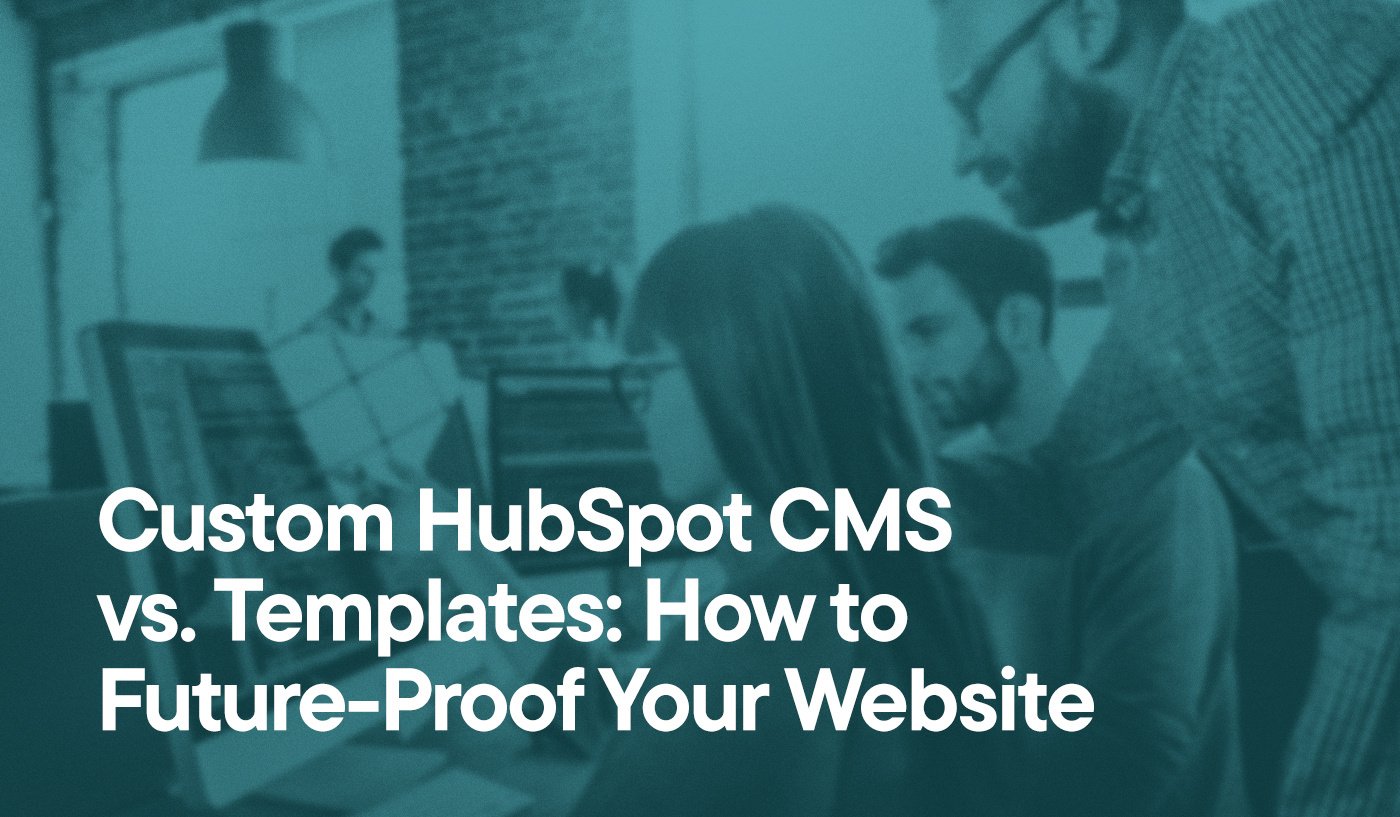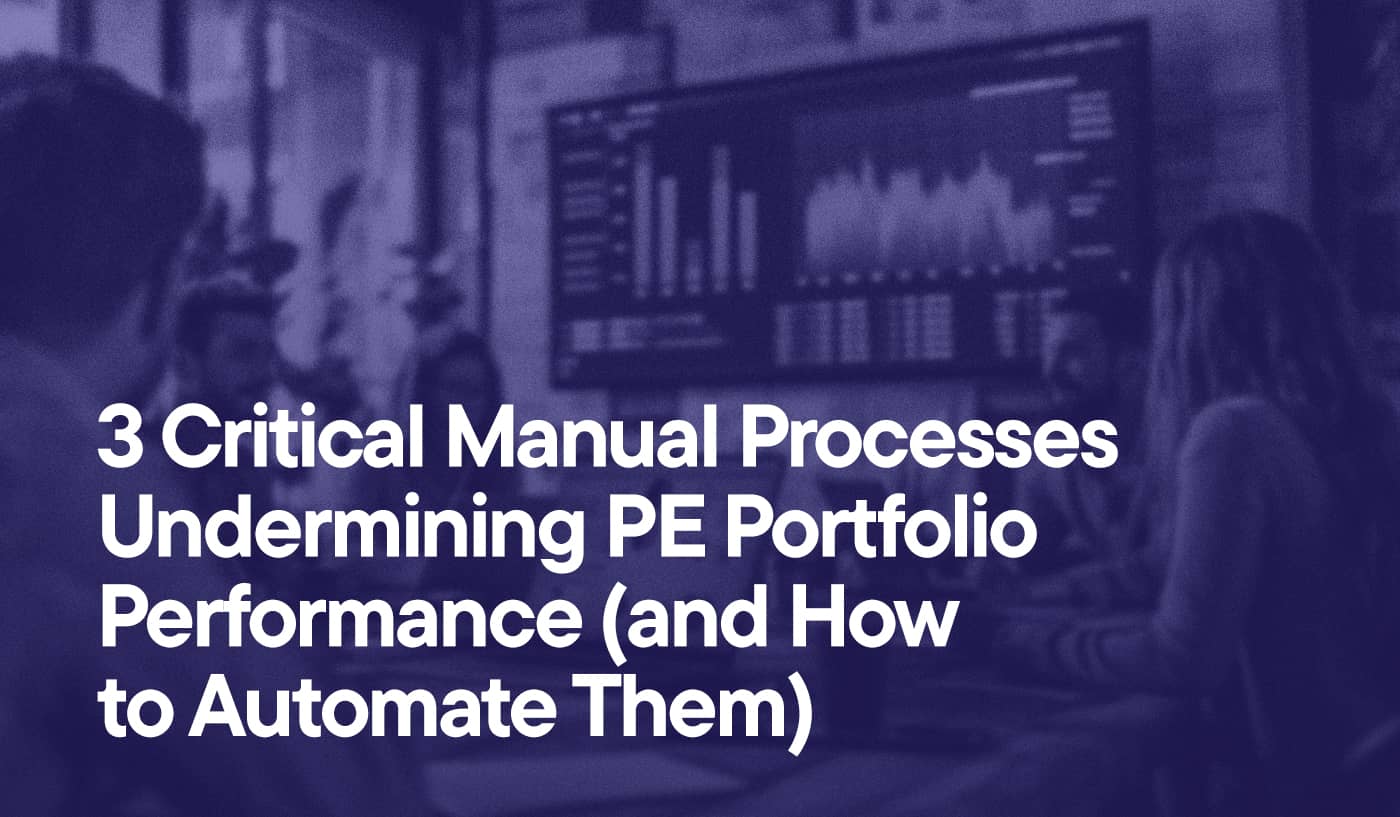Transitioning from Salesforce to HubSpot represents a significant shift in how your organization manages customer relationships and data.
While the prospect of changing your primary CRM system might seem daunting, a well-executed migration can transform your sales, marketing, and customer service processes for the better.
At Hypha HubSpot Development, we’ve guided numerous organizations through this journey, turning potential disruption into opportunity.
Key Takeaways
- Planning is critical: A successful migration starts with thorough assessment and preparation, including data cleanup and process documentation.
- Phased implementation reduces risk: Breaking the migration into stages by department (Contacts first, then Sales, then Support) minimizes business disruption.
- Parallel system operation is essential: Most successful migrations maintain both systems simultaneously during transition for business continuity.
- Data mapping requires careful attention: Creating detailed field mappings between systems ensures critical information isn’t lost during transition.
- User training is essential: Comprehensive training before each phase’s cutover ensures team adoption and productivity.
- Post-migration optimization delivers ROI: The true value comes from refining processes and leveraging HubSpot’s enhanced capabilities after migration.
Migration Timeline: Salesforce to HubSpot
- ✔ Create a Migration Team: Assemble a cross-functional team with representatives from Sales, Marketing, Customer Success, and Finance.
- ✔ Audit Your Current Salesforce Setup: Document objects, fields, relationships, workflows, and integrations.
- ✔ Define Migration Goals and Priorities: Prioritize Contacts, Sales, Support, and Finance in a phased approach.
- ✔ Configure HubSpot Fundamentals: Set up user accounts, permissions, custom properties, and automation rules.
- ✔ Map Data Structures Between Systems: Create detailed field mappings to preserve data integrity.
- ✔ Redesign Sales Pipelines and Processes: Optimize sales stages, probabilities, and workflows.
- ✔ Perform Test Migrations: Conduct sample migrations to validate mappings and identify issues.
- ✔ Migrate Core Contact Data First: Transfer contacts, companies, and marketing data as the foundation.
- ✔ Build and Test Essential Workflows: Recreate lead lifecycle, assignment rules, and notifications.
- ✔ Establish Bi-Directional Syncing: Maintain both systems with syncing to ensure data consistency.
- ✔ Deploy User Training Before Cutover: Conduct role-specific training with hands-on practice.
- ✔ Implement Phased Cutover by Department: Migrate Marketing, Sales, Support, and advanced integrations sequentially.
- ✔ Schedule Buffer Time Between Phases: Allow 1-2 weeks to address issues and ensure stability.
- ✔ Set a Final Cutover Date: Decommission Salesforce after all phases are complete.
- ✔ Connect Third-Party Systems: Integrate HubSpot with QuickBooks, website forms, and other tools.
- ✔ Implement Advanced Automations: Build workflows for attribution, customer health scoring, and more.
- ✔ Gather Feedback and Optimize: Collect user feedback and refine processes for better adoption.
- ✔ Conduct Migration Review: Document lessons learned and plan for future enhancements.
- ✔ Establish Data Management Protocols: Set up processes for data audits and quality maintenance.
- ✔ Plan for Continuous Improvement: Create a roadmap for ongoing HubSpot enhancements.
Step 1: Planning and Assessment (Weeks 1-2)
The foundation of any successful CRM migration lies in thorough preparation. Our approach begins with understanding your current Salesforce instance and envisioning your ideal HubSpot setup.
Create a Migration Team
We recently guided a client through assembling a migration team with representatives from each department: Sales, Marketing, Customer Success, and Finance.
This cross-functional approach ensures all stakeholders have input in the process. As we discovered in this project, assigning a dedicated migration manager proved crucial for maintaining momentum and accountability throughout the complex transition journey.
Audit Your Current Salesforce Setup
Before any data moves, we’ll help you document all objects, fields, and relationships in your current Salesforce instance. This thorough data validation process includes identifying essential workflows and automations that need to be recreated in HubSpot.
For our client, we created a comprehensive inventory of their Salesforce setup, including:
- Contact lifecycle stages and transitions
- Sales pipeline stages and qualification criteria
- Support ticket categories and routing rules
- Integration points with other systems
This documentation became the blueprint for their HubSpot implementation, ensuring nothing was overlooked in the transition—a critical step that prevented costly oversights down the road.
Define Migration Goals and Priorities
Not everything needs to migrate simultaneously. In fact, attempting to move everything at once often leads to confusion and technical challenges. Working with our client, we established a phased approach that prioritized core functionality first:
- Contacts and Marketing processes
- Sales processes and opportunities
- Support tickets and customer success workflows
- Finance integrations and reporting
This strategic prioritization allowed them to migrate methodically without overwhelming their team or disrupting operations.
Remember: A successful migration is more like a series of well-planned steps rather than one giant leap.
Step 2: System Setup and Configuration (Weeks 3-4)
With a solid plan in place, we now move to configuring your HubSpot instance to support your business processes. This foundational work determines how smoothly your data will transfer and how quickly your team will adapt.
Configure HubSpot Fundamentals
In this phase, we establish your HubSpot account structure and settings to mirror your organizational needs. For our client, we set up:
- User accounts with appropriate permissions
- Company-wide defaults and naming conventions
- Custom properties that aligned with their business requirements
- Automation rules for data management
The time invested in proper configuration pays dividends later through smoother operations and better data integrity.
Map Data Structures Between Systems
Data mapping is where expertise makes a critical difference in custom object migration. We create detailed field mappings for each object type, ensuring information transfers correctly and maintains its relationships.
Our client had complex field relationships in Salesforce that required careful mapping to maintain data integrity in HubSpot. Through meticulous planning, we ensured that:
- Custom fields preserved their data types
- Picklist values matched between systems
- Formula fields were recreated appropriately
- Required fields were properly identified
This attention to detail prevented data validation issues that could have derailed the entire migration process.
Redesign Sales Pipelines and Processes
A CRM migration presents an opportunity to optimize your sales processes rather than simply replicating what existed before.
Migrating sales pipelines from Salesforce to HubSpot isn’t just a technical exercise—it’s a chance to evolve your approach. Rather than simply recreating their Salesforce pipeline, we helped our client redesign their sales stages to better align with their actual sales process. This included:
- Separating pipelines for new business, renewals, and cross-sell/upsell
- Defining clearer stage transition criteria
- Implementing more accurate probability percentages for forecasting
- Streamlining approval workflows for special pricing and discounts
These improvements would have been difficult to implement in their legacy system, but became relatively straightforward during the migration.
Step 3: Initial Data Migration and Validation (Weeks 5-6)
With configurations in place, we begin the actual data transfer, starting with test migrations to validate our approach. Think of this as the dress rehearsal before the main performance.
Perform Test Migrations
We always conduct small sample migrations first to validate mapping accuracy and identify potential issues.
With our client, this meticulous approach revealed several field mapping adjustments needed before full migration. We recommend migrating a small batch of records for each object type (companies first, then contacts, then opportunities) to verify data integrity. During this phase, we discovered and fixed:
- Inconsistent date formats
- Character limitations in certain fields
- Relationship mapping errors
- Custom field data type mismatches
These discoveries allowed us to refine our approach before moving large volumes of data.
Migrate Core Contact Data First
Following the test phase, we migrated the client’s contacts as the foundation for all subsequent data. This careful sequencing ensured that relationships could be properly established between objects. This included:
- Contact records with complete history
- Companies and account relationships
- Marketing engagement data
- Subscription preferences and communication history
The successful transfer of this core data provided confidence to proceed with the more complex aspects of the migration.
Build and Test Essential Workflows
Once core data is in place, we recreate critical workflows in HubSpot. In this case, it meant not just duplicating existing automations, but enhancing them with HubSpot’s powerful capabilities. We implemented:
- Lead lifecycle stage progressions
- Assignment rules for new leads
- Notification workflows for sales activities
- Marketing automation sequences
- Data enrichment processes
By thoroughly testing these workflows with actual data, we ensured they would function properly when live.
Connect Multiple Platforms Seamlessly
Is a HubSpot Integration Right for Your Business?
Explore Custom Integration Solutions arrow_forwardStep 4: Phased Implementation with Parallel Systems (Weeks 7-16)
One of the most critical aspects of successful migrations is maintaining both systems in parallel during the transition. This dual-system approach allows your team to continue their day-to-day operations without disruption while gradually shifting to HubSpot.
Establish Bi-Directional Syncing
During this period, we maintain both Salesforce and HubSpot as active systems, with carefully designed bi-directional syncing between them.
This minimizes disruption while ensuring data consistency. In this migration, that meant:
- Key data updated in either system would reflect in both platforms
- Teams could gradually transition their workflows to HubSpot
- No critical information was lost during the transition period
Our client maintained both systems in parallel for approximately four months, though this timeline varies based on organizational complexity. Some simpler migrations may need only six to eight weeks of parallel operation, while more complex enterprises might require up to six months of overlapping system usage.
Deploy User Training Before Cutover
Training is essential for user adoption—without it, even the best-designed system will fail to deliver value. Before each phase’s cutover, we conducted role-specific training sessions for our client’s team. These engaging sessions included:
- Hands-on practice with their actual data
- Documentation of common tasks
- Comparison guides showing Salesforce vs. HubSpot approaches
- Troubleshooting scenarios and solutions
This investment in training dramatically accelerated adoption and reduced resistance to change.
Implement Phased Cutover by Department
Following our client’s example, we recommend this migration sequence to ensure each team has time to adapt before the next department transitions:
- Week 7: Marketing and Contacts
- Week 10: Sales and Opportunities/Deals
- Week 13: Support/Customer Success
- Week 16+: Advanced integrations and reporting
This methodical approach prevents overwhelming any one department and allows each team to serve as champions for subsequent groups.
Schedule Buffer Time Between Phases
Between each cutover phase, we schedule one to two weeks of buffer time to address issues and ensure stability before proceeding to the next phase. In our client’s case, this buffer time proved invaluable for making adjustments and addressing user questions. During these periods, we:
- Collected user feedback
- Resolved unexpected issues
- Refined training materials
- Made system adjustments
This breathing room prevented the common cascade of problems that can occur when phases are scheduled too tightly together.
Set a Final Cutover Date
After completing all migration phases and ensuring all teams are comfortable with HubSpot, we establish a final cutover date when Salesforce will be decommissioned. In this instance, the date was approximately four months from the start of implementation, though this can vary significantly based on your organization’s complexity and needs. This milestone celebration marked the official completion of their transformation journey.
Step 5: Integration and Optimization (Weeks 13-18)
With core functionality migrated, we focus on connecting systems and optimizing processes. Now the real power of your HubSpot investment begins to materialize.
Connect Third-Party Systems
We integrate HubSpot with your other business tools, prioritizing based on operational importance. These integrations ensure a seamless flow of information throughout your business ecosystem. For our client, this included:
- QuickBooks integration for financial data
- Website forms and chat
- Email marketing platforms
- Support ticketing systems
- Calendar tools for scheduling
Each integration extended HubSpot’s capabilities and eliminated manual data entry tasks that previously consumed valuable time.
Implement Advanced Automations
Once the basics are established, we build more sophisticated workflows to enhance efficiency and data validation. Through strategic automation, manual tasks are minimized and consistency is maximized. Our client implemented several advanced automations, including:
- Multi-touch attribution reporting
- Automated renewal tracking
- Customer health scoring
- Cross-functional notifications
- Deal stage progression rules
These automations delivered significant time savings and improved process consistency across departments.
Gather Feedback and Optimize
We facilitate feedback collection from users and make adjustments based on real-world usage. This continuous improvement approach helped our client achieve higher user adoption and satisfaction with their new HubSpot system. Regular optimization sessions identified:
- Training gaps to address
- Process inefficiencies to streamline
- Additional automation opportunities
- Custom reporting needs
By treating the migration as an ongoing optimization process rather than a one-time event, our client maximized their return on investment.
Step 6: Final Review and Ongoing Management (Week 18+)
The migration journey doesn’t end at cutover—the most value comes from ongoing optimization. In many ways, this is where the real transformation begins.
Conduct Migration Review
We help you document lessons learned and create a plan for addressing any remaining gaps. Our client conducted a comprehensive review that identified several optimization opportunities for Phase 2 enhancements. This retrospective approach ensures that:
- Challenges faced during migration inform future projects
- Quick wins are identified for immediate implementation
- Long-term improvement opportunities are documented
- Success metrics are captured for ROI reporting
This review process creates a foundation for continuous improvement.
Establish Data Management Protocols
We assist in creating processes for ongoing data quality maintenance and validation. These include developing systematic approaches to:
- Regular data audits
- Duplicate management procedures
- Field usage reviews
- User permission audits
- Data enrichment workflows
These protocols ensured their HubSpot instance remained clean and effective over time, avoiding the gradual degradation that plagues many CRM implementations.
Plan for Continuous Improvement
We work with you to establish a roadmap for leveraging HubSpot’s full capabilities over time. Our client developed a quarterly enhancement plan to progressively implement more advanced HubSpot features. This roadmap approach:
- Prevents feature overwhelm
- Ensures ongoing value realization
- Maintains momentum after the initial migration
- Creates clear success metrics for each enhancement phase
With this strategic approach, their HubSpot implementation continues to evolve and deliver increasing value.
How Hypha HubSpot Development Delivers Migration Excellence
Our approach to Salesforce to HubSpot migrations is built on deep expertise and proven methodologies that ensure your transition is smooth and successful.
Specialized Migration Expertise
Our team has extensive experience transitioning complex sales processes from Salesforce to HubSpot.
We understand both platforms intimately, ensuring nothing gets lost in translation. Our expertise includes:
- Preserving critical business logic while improving process efficiency
- Translating complex Salesforce workflows into HubSpot equivalents
- Migrating custom objects and fields with full data integrity
- Navigating the nuances of both platforms’ architecture
This specialized knowledge prevents the common pitfalls that derail many migration attempts.
Data-Focused Approach
Data quality is paramount in any migration. Without rigorous data validation and cleansing, even the best-designed system will underperform. We implement:
- Custom solutions to prevent data duplication issues
- Proprietary data validation tools to ensure field mapping accuracy
- Specialized cleanup processes for duplicate company records
- Automated data enrichment workflows
Our meticulous approach to data ensures your HubSpot instance starts with a clean, reliable foundation.
Process Optimization
We don’t just migrate—we transform your processes for better efficiency when migrating sales pipelines from Salesforce to HubSpot:
- Redesigning sales stages to match HubSpot’s capabilities while preserving your team’s workflow
- Implementing sophisticated lifecycle stage transitions
- Creating streamlined approval processes and notifications
- Eliminating redundant steps that accumulated in your legacy system
This transformational approach delivers far greater value than a simple system replacement.
Custom Integration Solutions
Our integration expertise ensures your business ecosystem remains connected:
- Seamless connections between HubSpot and financial systems
- Custom solutions for specialized systems integration
- Preservation of data flow between platforms during transition
- API-level integrations for complex requirements
These integration capabilities ensure HubSpot works harmoniously with your entire technology stack.
FAQ: Salesforce to HubSpot Migration
The timeline varies based on complexity, but most migrations take 12-16 weeks from planning to completion. Organizations with simple needs may complete the process in 6-8 weeks, while complex enterprises with custom integrations might require 6-12 months. The key factor is thorough planning and realistic timelines that account for your specific complexity factors.
While the platforms have different approaches, most Salesforce functionality can be recreated in HubSpot. In our experience, clients actually gain functionality in areas like marketing automation, content management, and user experience. HubSpot’s more intuitive interface often enables teams to utilize features they struggled to implement in Salesforce.
With our parallel systems approach, downtime is minimal to nonexistent. By maintaining both systems and implementing bi-directional syncing during the transition period, your teams can continue working without interruption while gradually shifting to HubSpot. This approach eliminates the “big bang” cutover that creates risk in most migrations.
Yes, our approach enables continued use of Salesforce until each phase is ready to cut over to HubSpot. In fact, we recommend maintaining both systems in parallel for several months to ensure a smooth transition. This dual-system approach provides maximum flexibility and minimal business disruption during your migration journey.
We develop custom solutions for unique data structures, including custom object migration, properties, and integrations to ensure no critical information is lost during transition. Our experience with both platforms allows us to identify creative solutions for even the most complex data mapping challenges.
We provide role-specific training tailored to each team’s needs. This typically includes general HubSpot orientation, role-specific functionality training, and comparison guides showing how to perform familiar tasks in the new system. Our training approach focuses on practical applications using your actual data, not generic examples.
Our process includes comprehensive data cleaning before migration, validation during transfer, and post-migration verification to ensure data integrity throughout the process. We implement automated data quality checks and manual reviews at each stage to prevent the “garbage in, garbage out” syndrome that plagues many migrations.
Ready to Transform Your CRM Experience?
Migrating from Salesforce to HubSpot represents an opportunity to not just change systems, but to transform how your organization engages with customers and manages data.
At Hypha HubSpot Development, we’ve refined our migration approach through numerous successful projects, ensuring your transition is smooth, efficient, and value-focused.
Contact us today for a migration consultation and discover how we can help you leverage HubSpot’s full potential while preserving the valuable data and processes you’ve built in Salesforce.




